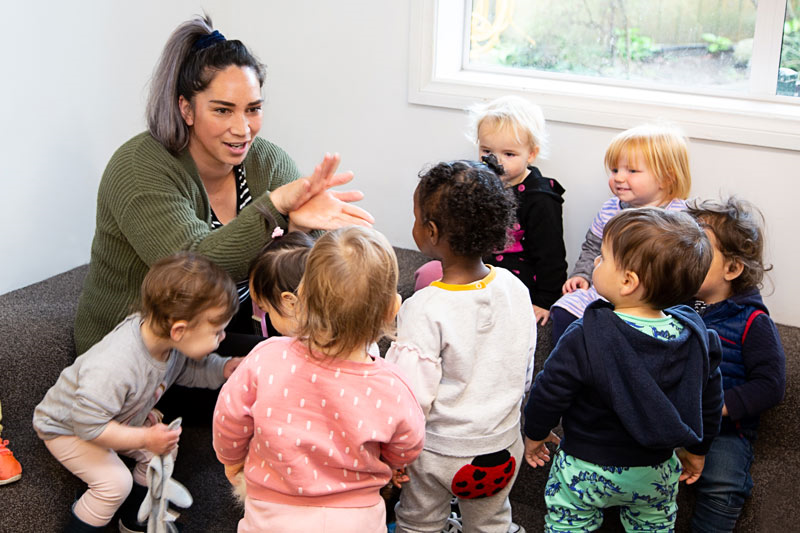Te whakawhanake i te reo ā-waha mā te puoro me te waiata
Extending oral language through music and songs
This resource outlines how kaiako can use waiata and music can to create a rich oral language enviroment for children. This is part of the Talking together, Te kōrerorero suite of resources. See the resource carousel below for more.

It has been said, "music is the universal language"1. The frequent inclusion of waiata and music creates a rich oral language environment. This is especially so when kaiako make a point of being actively involved alongside tamariki.
Waiata and music:
- help tamariki connect with the words, rhythms, and emotional content of languages
- encourage imitation, turn-taking, and opportunities for social interaction
- help develop sound discrimination or phonological awareness
- support tamariki to become strong in their culture and identity
- provide opportunities for repetition in the learning of additional languages.
Waiata
Waiata sung with passion strengthens the development of te reo Māori. Gestures, movement, and facial expressions are all helpful hooks for memorising language. Look to include waiata from local iwi and whānau when you do this. Waiata that repeat sounds and actions: "kapo kapo ringa ringa, paki paki parirau, whatiwhati tō hope" are particularly good for building te reo Māori vocabulary.
Use well-known songs to:
- introduce concepts of loud, quiet, slow, fast, high, low
- pause and wait for children to finish a word or line
- practise and enjoy imitation and turn-taking
- encourage children to lead singing sessions.
Compose songs with tamariki and whānau to share experiences, tell stories, and support transitions and daily rituals. You could borrow an existing rangi (tune), pātere (chant), oriori (lullaby), or make up your own.
When introducing songs,talk about new vocabulary and use these words outside of the song.
Instruments
Use instruments to:
- make up sound discrimination games like guess my instrument
- practice and enjoy imitation and turn-taking
- encourage understanding of rhythm – games such as play my name help understanding of rhythm and how syllables work in words.
Choose recorded music and waiata carefully. As good as they can be, it is your presence and thoughtful interactions that are necessary to facilitate the many language learning opportunities that waiata and music offer tamariki.

Story of practice: Birthday songs from around the world
The last day of term was busy at the Playcentre - four children were celebrating birthdays. The usual rituals of decorating a chair and making a hat were complete, and everyone was sitting around tables outside, eating morning tea. All that remained was to sing Happy Birthday and blow out the candles several times.
After Happy Birthday was sung in English and te reo Māori, a parent said, “Hey, we need to sing it in Dutch”. Eva’s mother and older brother started clapping and singing as she blushed with pride.
“And now in German for Max.”
At the next birthday the following term, a parent who had noticed this offered a special Indonesian birthday song. She handed her baby to the person next to her, squatted down with the children, and started to sing, inviting everyone to join in with the repetitive phrases. A parent said, “We’ll need to add that one to our repertoire now – can you write it out for us so we can all learn it?”
References and useful resources
1 This quote is generally attributed to poet Henry Wadsworth Longfellow, who wrote in 1835, "Music is the universal language of mankind."
Kua kite rānui koe?
About this resource
This resource outlines how kaiako can use waiata and music can to create a rich oral language enviroment for children. This is part of the Talking together, Te kōrerorero suite of resources. See the resource carousel above for more.
















